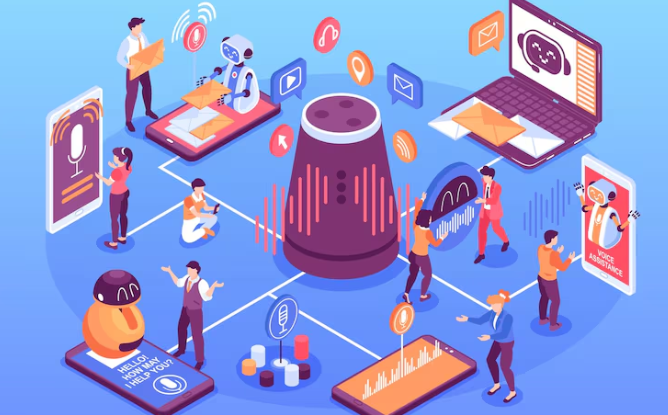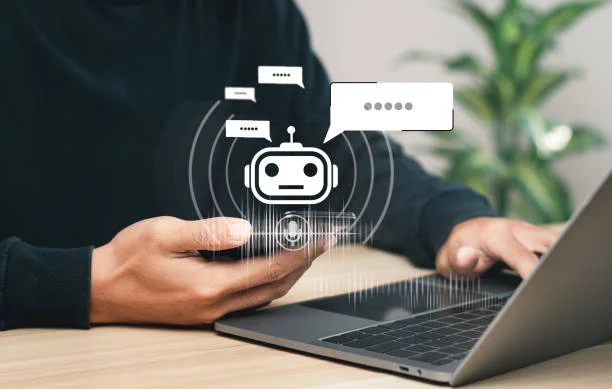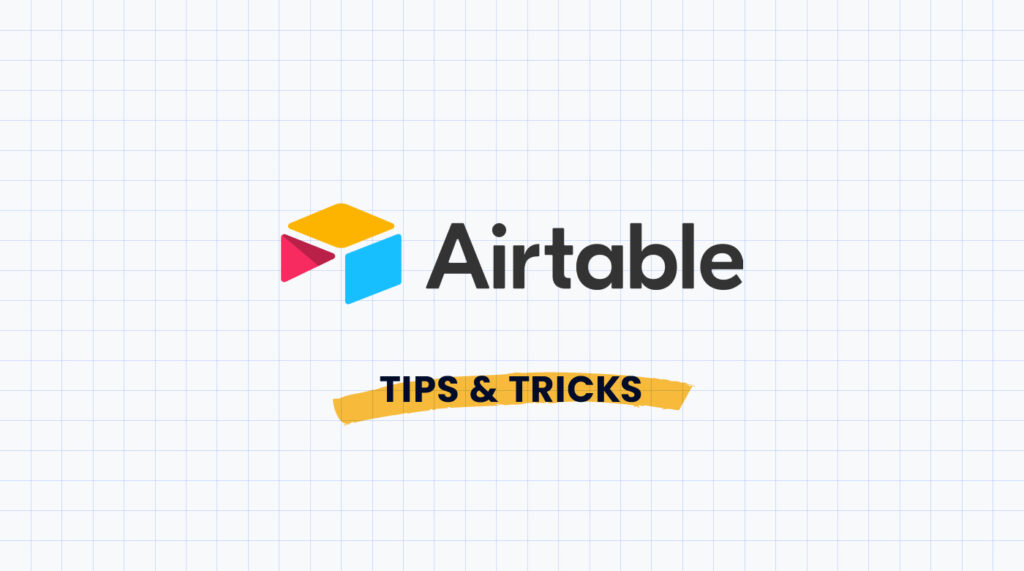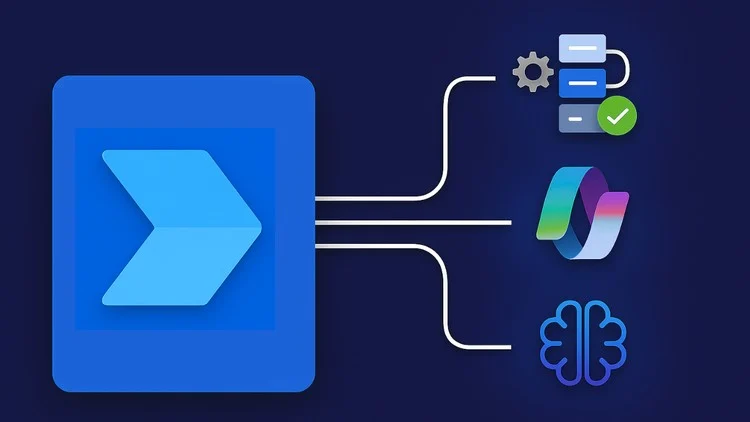Understanding AI Social Media Content Generators

Defining AI-powered content creation for social media
AI-powered content creation for social media leverages artificial intelligence algorithms to automate and enhance various aspects of the content creation process. This goes beyond simple automation; we’re talking about intelligent tools that can generate various content formats, from engaging captions and compelling ad copy to eye-catching visuals and even short-form video scripts. In our experience, effective AI tools analyze vast datasets to understand audience preferences, trending topics, and optimal posting times, leading to significantly improved engagement metrics. A common mistake we see is expecting perfect content on the first try; AI is a tool requiring human oversight and refinement.
For example, some platforms utilize natural language processing (NLP) to craft highly targeted social media posts based on specific keywords and audience demographics. Others employ machine learning (ML) algorithms to analyze past performance, predicting which types of content will resonate most effectively. Consider a clothing brand using AI to generate product descriptions optimized for different platforms – concise tweets versus longer, more descriptive Instagram captions. This strategic approach allows brands to maintain a consistent voice while adapting to the unique nuances of each social media channel. Successfully integrating AI requires understanding its strengths (automation, scalability) and weaknesses (the need for human editing and ethical considerations).
Benefits of using AI for social media content
AI-powered social media content generators offer several significant advantages for businesses and individuals. In our experience, the most impactful benefit is increased efficiency. Instead of spending hours brainstorming and crafting individual posts, you can leverage AI to generate multiple options in minutes, significantly boosting your content output. This allows you to maintain a consistent social media presence, a crucial factor in building brand awareness and engagement. For example, we’ve seen clients using AI to generate 5-10 different post variations in the time it previously took them to create just one.
Furthermore, AI tools can assist in optimizing your content for various platforms. A common mistake we see is using the same content across all social media channels without tailoring it to the specific audience and platform nuances. AI can help overcome this by adapting your content’s tone, length, and format to best suit platforms like Twitter, Instagram, or Facebook. This results in improved engagement rates and a more impactful overall social media strategy. Finally, some advanced AI tools offer data-driven insights, analyzing trends and identifying optimal posting times to maximize reach and impact. This level of analytical support can be particularly valuable for small businesses with limited resources.
Limitations and potential drawbacks of AI content generators
While AI content generators offer incredible speed and efficiency, understanding their limitations is crucial for successful social media management. A common mistake we see is relying solely on AI-generated content without human oversight. In our experience, this often leads to bland, generic posts that lack the personality and engagement needed to resonate with your audience. AI struggles with nuanced understanding of context, brand voice, and current events, potentially leading to tone-deaf or inaccurate messaging. For example, an AI might generate a post about a sensitive topic without fully grasping the cultural implications, causing unintentional offense.
Furthermore, over-reliance on AI can negatively impact your SEO. Search engines are increasingly sophisticated at detecting AI-generated content, potentially penalizing your site for low-quality, thin content. You also risk sacrificing authenticity. While AI can assist in brainstorming and drafting, it shouldn’t replace the human element—your unique perspective and understanding of your target audience are irreplaceable. Remember to always review, edit, and personalize AI-generated content before publishing to ensure it aligns with your brand and avoids potential pitfalls. Consider using AI as a tool to *augment* your creative process, not to replace it entirely.
Choosing the Right AI Social Media Content Generator

Key features to look for in an AI content generator
Selecting the right AI social media content generator requires careful consideration of several key features. In our experience, focusing solely on price is a common mistake. Look beyond the cost and prioritize functionality tailored to your specific social media strategy. For instance, a tool excelling at generating engaging captions might fall short on creating visually appealing image descriptions, crucial for platforms like Pinterest and Instagram. Consider whether you need support for various content formats—from short-form video scripts to longer blog post outlines—as a versatile tool can streamline your workflow significantly. Advanced features such as SEO optimization capabilities and brand voice consistency tools are invaluable assets for maintaining a professional and effective online presence.
Beyond the core functionalities, prioritize user-friendliness and ease of integration. A robust AI tool should seamlessly integrate with your existing social media management platforms. A clunky interface can negate the time-saving benefits. Furthermore, look for tools offering features such as content scheduling and performance analytics. This allows for efficient content planning and data-driven optimization. For example, analyzing the engagement rate of AI-generated content compared to manually created content offers valuable insights into the tool’s efficacy and helps you refine your strategy over time. Don’t underestimate the importance of reliable customer support – timely assistance can be crucial when troubleshooting technical issues or exploring the tool’s full potential.
Types of AI content generators (image, video, text)
AI content generators are rapidly evolving, offering diverse capabilities beyond simple text generation. We’ve found that choosing the right tool hinges on understanding the different media types it handles. Currently, the market predominantly features three categories: text generators, image generators, and video generators. Text generators, like Jasper or Copy.ai, excel at crafting various social media copy formats—from engaging captions to compelling ad copy. In our experience, their effectiveness is highly dependent on the quality of your prompts; vague instructions yield generic results.
Image generators, such as Dall-E 2 and Midjourney, offer a powerful way to create unique visuals. However, they require careful prompt engineering to achieve the desired aesthetic and avoid common pitfalls like distorted features. Video generation is still in its relatively nascent stages, with tools like RunwayML offering promising but often more resource-intensive solutions. A common mistake we see is assuming these AI tools are fully autonomous; substantial human oversight and editing are generally necessary for optimal results across all three types of generators, regardless of their sophistication. Consider your budget, technical skills, and specific social media goals when selecting an AI content generator tailored to your needs.
Free vs. paid AI social media tools: A comparison
Free AI social media tools often offer limited features and capabilities. In our experience, these limitations frequently manifest as restricted character counts, fewer content formats (e.g., only text, no image generation), and a lack of advanced customization options. For example, a free tool might generate decent tweets, but struggle with crafting compelling longer-form Instagram captions or visually rich Pinterest descriptions. These limitations can hinder your overall social media strategy, especially as your needs evolve. A common mistake we see is relying solely on free tools when scaling up marketing efforts.
Paid AI content generators, conversely, typically provide a far more comprehensive suite of features. This often includes higher character limits, diverse content formats (including image and video generation in some cases), advanced customization options for tone and style, and bulk content creation capabilities. For instance, a paid tool might allow for the scheduled posting of dozens of tailored posts across multiple platforms, saving significant time and effort. While the upfront cost is higher, the increased efficiency and improved content quality can ultimately deliver a greater return on investment (ROI), especially for businesses with robust social media strategies. Consider carefully the features your brand requires before deciding whether a paid tool justifies its cost.
Step-by-Step Guide: Creating Engaging Content with AI

Defining your target audience and brand voice
Before diving into AI-powered content creation, meticulously define your target audience. Who are you trying to reach? Consider demographics (age, location, income), psychographics (values, interests, lifestyle), and online behavior (social media platforms used, content consumption habits). In our experience, neglecting this crucial step leads to generic content that resonates with no one. For instance, a youthful streetwear brand targeting Gen Z will employ a drastically different tone and style than a luxury car manufacturer aiming for affluent professionals. Understanding your audience informs every subsequent decision.
Next, establish your brand voice. This encompasses the personality and tone you want to project. Are you playful and irreverent? Authoritative and informative? Sophisticated and elegant? A common mistake we see is attempting to be everything to everyone. Instead, choose a consistent voice that reflects your brand identity and resonates with your target audience. For example, a humorous brand might use puns and emojis, while a professional services firm might opt for a formal, factual approach. Remember, your brand voice should be authentic and easily recognizable across all your content. Use AI tools to analyze successful campaigns from brands with similar voices for inspiration.
Using AI tools to generate different content formats (posts, captions, stories)
Many AI tools excel at generating diverse social media content. For example, Jasper and Copy.ai are strong choices for crafting compelling posts across various platforms. Inputting specific keywords and desired tone significantly impacts output quality. In our experience, providing examples of successful posts often leads to even better AI-generated results. Remember to always review and edit the AI’s output; it’s a powerful tool, but not a perfect replacement for human oversight. A common mistake is relying solely on the AI without refining its suggestions.
Generating engaging captions and stories requires a slightly different approach. While some tools specialize in longer-form content, others, like Rytr, are optimized for concise, impactful text ideal for Instagram or TikTok. Consider using different tools depending on the platform and content type. For instance, when creating Instagram stories, emphasize brevity and visual elements. Tools capable of suggesting relevant hashtags can boost visibility. Experiment with various prompts and inputs to refine the AI’s suggestions to match your brand’s voice and target audience, keeping in mind that platform-specific best practices still apply.
Optimizing AI-generated content for social media platforms
AI-generated content needs a human touch to truly shine on social media. A common mistake we see is directly posting raw AI output. In our experience, optimizing requires a multi-step process. First, carefully review the AI’s output for factual accuracy, brand consistency, and overall tone. Then, tailor it to the specific platform. For instance, Twitter’s character limit necessitates concise phrasing, while LinkedIn benefits from more professional and detailed content. Consider using AI tools to help with this step – some can even adapt writing style to a chosen platform.
Next, enhance engagement. AI often lacks the nuanced understanding needed for truly compelling social media posts. Add a human element by injecting personality through storytelling, questions, or relevant emojis. A compelling visual is also crucial; consider using high-quality images or videos. Finally, thoroughly analyze your results. Track metrics like engagement rates and reach to understand what resonates best with your audience. This iterative process—refine, analyze, repeat—is key to mastering AI-powered social media content creation. Remember, AI is a tool; human oversight and strategic optimization remain essential for success.
Integrating AI into Your Social Media Workflow

Scheduling and automating posts with AI
Many AI-powered social media management tools offer robust scheduling and automation capabilities. These go beyond simple scheduling; they leverage AI to optimize posting times based on your audience’s engagement patterns. For example, Hootsuite Insights can analyze your historical data to predict optimal posting times, maximizing reach and engagement. In our experience, failing to utilize this feature leads to significantly lower interaction rates. Consider A/B testing different posting schedules suggested by the AI to fine-tune your strategy.
A common mistake we see is relying solely on AI-driven suggestions without human oversight. While AI can identify trends, it can’t fully grasp nuanced brand messaging or unexpected events. Therefore, a successful strategy involves a hybrid approach. Use AI tools to *suggest* optimal times and batch-schedule content, but always review the schedule before finalizing. This allows for manual adjustments based on campaigns, breaking news, or crucial announcements that require immediate posting. Tools like Buffer and Later allow for easy manual adjustments alongside their AI-powered scheduling features. Remember, AI is a powerful tool, but human judgment remains crucial for achieving truly effective social media automation.
Analyzing results and refining your strategy
Analyzing your AI-generated social media content’s performance is crucial for continuous improvement. In our experience, focusing solely on vanity metrics like likes and shares provides an incomplete picture. Instead, prioritize key performance indicators (KPIs) relevant to your business goals. Are you aiming for increased website traffic? Track click-through rates (CTR) from your posts. Seeking leads? Monitor engagement with calls-to-action (CTAs). A common mistake we see is neglecting to segment your audience; analyze performance across different demographics to tailor your content strategy effectively. For example, a campaign targeting younger audiences might perform better on TikTok compared to LinkedIn.
Refining your strategy requires iterative adjustments. Let’s say your initial AI-generated posts about a new product had low engagement. Don’t panic. Analyze the content itself. Was the tone too formal? Was the visual appeal lacking? Did the copy clearly convey the product’s value proposition? Experiment with different prompts to the AI, varying the style, format (e.g., carousels, videos, Reels), and even the platform. A/B testing different versions of AI-generated content allows you to identify which elements resonate best with your target audience. Remember, consistent monitoring and data-driven adjustments are key to maximizing your return on investment (ROI) and achieving your social media objectives.
Human oversight and editing of AI-generated content
AI tools are powerful, but they’re not perfect. In our experience, relying solely on AI-generated content leads to inconsistencies in brand voice and a lack of genuine connection with your audience. Therefore, human oversight is crucial at every stage. Don’t just generate and post; treat AI as a powerful assistant, not a replacement for human creativity and judgment. A common mistake we see is neglecting to fact-check AI-generated information. Always verify data and claims, ensuring accuracy and avoiding the spread of misinformation.
Effective editing goes beyond simple proofreading. Look for opportunities to enhance the content’s emotional resonance and brand alignment. For example, if the AI generates a caption that’s factually correct but feels robotic, inject some personality and wit. Consider A/B testing different versions—one AI-generated, one human-edited—to see which resonates better with your followers. Remember to also check for bias in the AI’s output, which can subtly influence your brand messaging. By integrating human oversight and editing into your workflow, you’ll produce higher quality content that strengthens your brand, builds trust, and boosts engagement.
Advanced Techniques and Best Practices
Using AI for A/B testing and content optimization
AI significantly accelerates A/B testing for social media content optimization. Instead of manually creating multiple versions of posts, you can leverage AI tools to generate variations based on different headlines, visuals, and calls to action. In our experience, this dramatically shortens the testing cycle, allowing for faster iteration and improved campaign performance. A common mistake is failing to define clear success metrics beforehand. Ensure you specify what you’re optimizing for (e.g., click-through rate, engagement, conversions) before initiating your A/B tests.
For instance, you might use an AI tool to generate five different versions of a Facebook ad, each with a unique headline and image. After running the A/B test, analyze the results using AI-powered analytics dashboards. These platforms often provide insightful data visualizations, highlighting which elements resonate most with your target audience. This data-driven approach allows for continuous improvement. Remember to consider factors beyond simple metrics. Qualitative data, such as user comments and feedback, can provide valuable insights that purely quantitative analyses might miss, offering a more complete picture for informed content optimization strategies.
Leveraging AI for social listening and trend analysis
AI significantly enhances social listening and trend analysis, moving beyond basic keyword tracking. In our experience, tools like Brandwatch or Talkwalker offer sophisticated sentiment analysis, identifying not just mentions but the overall positive, negative, or neutral feelings surrounding your brand or industry. This allows for proactive crisis management—for instance, quickly spotting a negative trend emerging from a product flaw before it goes viral. Analyzing the context of these mentions is also crucial; AI can help categorize discussions based on themes, revealing unmet customer needs or emerging trends.
A common mistake we see is solely focusing on volume. While high mention counts matter, AI helps prioritize *meaningful* mentions. For example, a spike in negative comments from influencers carries more weight than a large number of low-engagement posts from less influential users. By leveraging AI’s ability to analyze user demographics and influence scores, you can target your response strategies effectively. Consider using AI-powered dashboards to visualize data and track key metrics over time. This allows for a data-driven approach to content planning, ensuring you’re addressing relevant trends and engaging your target audience effectively.
Ethical considerations and responsible AI use in social media
Responsible AI deployment in social media necessitates a proactive approach to ethical considerations. A common mistake we see is neglecting bias detection in training data. AI models learn from the data they’re fed; biased data leads to biased outputs, perpetuating harmful stereotypes or discriminatory practices. For example, an AI generating captions for images might consistently associate certain demographics with negative connotations, reflecting biases present in the initial dataset. Thorough data auditing and the use of diverse, representative datasets are crucial to mitigating this.
Furthermore, transparency and accountability are paramount. In our experience, clearly disclosing the use of AI in content generation builds trust with your audience. Consider adding a disclaimer or using hashtags like #AIgenerated to manage expectations. Always retain human oversight—AI should augment, not replace, human creativity and judgment. Remember, the goal is to leverage AI for efficiency and creativity, not to spread misinformation or engage in manipulative practices. Regularly evaluate your AI’s output for potential ethical pitfalls and be prepared to adapt your strategies as needed. Proactive ethical considerations ensure responsible AI adoption, leading to more authentic and trustworthy social media engagement.
The Future of AI in Social Media Content Creation

Emerging trends in AI-powered social media tools
AI-powered social media tools are rapidly evolving, moving beyond simple content generation. We’re seeing a surge in tools offering advanced features like personalized content creation based on audience segmentation and individual user profiles. For instance, platforms are now leveraging AI to analyze user data and tailor posts, ensuring higher engagement rates. This goes beyond simply altering the tone; it involves crafting unique messaging and visuals to resonate with specific demographics.
A common mistake we see is relying solely on AI without human oversight. While AI can significantly boost efficiency, the best results come from a collaborative approach. Consider tools that offer a blend of AI-assisted suggestions and human editing capabilities. For example, some platforms provide AI-generated content options alongside feedback mechanisms allowing marketers to refine and personalize further. This human-in-the-loop approach ensures brand voice consistency and avoids the pitfalls of generic, unengaging content. The future lies in AI-assisted workflows, not complete AI automation.
Predictions for the future of AI content generation
AI content generation will become increasingly sophisticated, moving beyond simple text generation to encompass multimodal content creation. We predict a rise in AI tools capable of producing engaging video scripts paired with automatically generated visuals and music, streamlining the entire content production pipeline. This will dramatically reduce production time and costs, particularly beneficial for small businesses and individual creators. In our experience, early adopters of these integrated AI tools are already seeing a significant return on their investment in terms of increased content output and audience engagement.
Expect to see further advancements in personalized content creation. AI will leverage user data and behavioral patterns to generate highly targeted content tailored to individual preferences. While this raises concerns regarding privacy, the potential for highly relevant and engaging social media posts is undeniable. A common mistake we see is neglecting to address the ethical implications of personalized content. Focusing on transparency and user control over data usage will be crucial for responsible AI implementation. Future platforms will likely incorporate robust mechanisms for users to manage their data and content preferences, ensuring a balance between personalization and user autonomy.
How to stay ahead of the curve in AI social media marketing
Staying ahead in AI-powered social media marketing requires proactive adaptation and continuous learning. In our experience, simply adopting AI tools isn’t enough; understanding their limitations and leveraging human creativity is crucial. A common mistake we see is relying solely on AI-generated content without careful review and refinement. Remember, AI is a tool, not a replacement for strategic thinking and brand voice. Effective strategies include experimenting with different AI platforms to find the best fit for your specific needs and audience. Consider A/B testing AI-generated content against human-created content to identify optimal performance levels.
To truly master this evolving landscape, dedicate time to staying informed about the latest advancements. Follow industry leaders, participate in relevant online communities, and attend workshops focusing on AI in social media. For example, understanding prompt engineering can drastically improve the quality of AI-generated content. Furthermore, focus on developing skills complementary to AI, such as data analysis to measure campaign effectiveness and human-centered copywriting to inject genuine brand personality into AI-enhanced posts. By combining the efficiency of AI with the nuanced understanding of human connection, you can establish a competitive edge in the ever-changing world of social media marketing.




